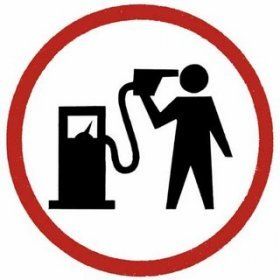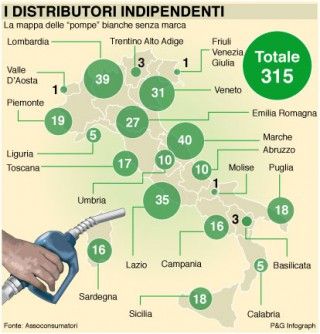Fuel prices in Italy have reached record levels, and with the end of the Eni/Agip weekend discounts of €0.20/litre on 2 September, the outlook for the autumn is grim.
“Reference prices” quoted by the oil companies are hovering around €1.93 for unleaded, €1.81 for diesel and €0.79 for LPG, with pump attendant service. But these do not take into account the regional supplements, which are decided autonomously at local level, and which have seen unleaded exceed €2.00 in some areas over the past few weeks, notably in the south and in Tuscany. And they also do not include smaller increases for motorway pumps or night service.
Apart from a brief respite in 2009, the price has been climbing inexorably since the psychological barrier of €1.00 was passed in 2000. But there are still ways to find a lower-priced fuel. For a start, there are unbranded or independent service stations in many areas, the so-called “pompe bianche”: websites like www.pompebianche.it and www.prezzibenzina.it can help you find one near you. And then there are promotions offered by supermarkets, such as Esselunga (in cooperation with Q8), Carrefour, Auchan and Conad. Even filling up yourself in the self-service lane brings a discount, but not for LPG – in Italy, unlike most other countries, LPG is always filled by the pump attendant.
Figures published by the Swiss Touring Club show only Norway charging more for unleaded fuel, at €2.04. Close behind Italy come the Netherlands at €1.93 and Sweden at €1.89. In the UK the price stands at €1.83, while the cheapest fuel in the EU is in Andorra at €1.40. It’s almost worth driving to Russia to fill up: you will pay €0.78 there. Italy scores slightly better with diesel, with only the UK, Norway and Sweden charging more.
Oil companies point out that tax accounts for more than half of the price at the pump. And a study by CGIA Mestre confirms this: Italy has the highest-taxed fuel in Europe, with over 58% of the price of unleaded and almost 54 per cent of diesel fuel going to the state. “Considering that 90 per cent of freight in Italy is transported by road,” they add, “we can’t exclude a significant hike in prices of the principal consumer goods in the autumn.” Consumer associations Adusbef and Federconsumatori calculate that the increase in fuel prices and the consequent knock-on effect on other consumer goods will cost every Italian an extra €768 this year.
Economic Development under-secretary Claudio De Vincenti said last week that the government is “studying the options” for reducing VAT on fuel, but gave no hint of when a reduction might be seen.

























